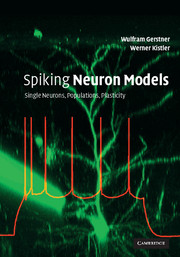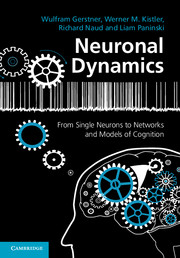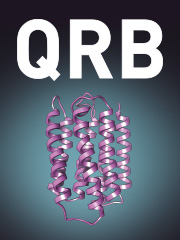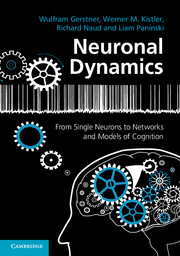Spiking Neuron Models
Neurons in the brain communicate by short electrical pulses, the so-called action potentials or spikes. How can we understand the process of spike generation? How can we understand information transmission by neurons? What happens if thousands of neurons are coupled together in a seemingly random network? How does the network connectivity determine the activity patterns? And, vice versa, how does the spike activity influence the connectivity pattern? These questions are addressed in this 2002 introduction to spiking neurons aimed at those taking courses in computational neuroscience, theoretical biology, biophysics, or neural networks. The approach will suit students of physics, mathematics, or computer science; it will also be useful for biologists who are interested in mathematical modelling. The text is enhanced by many worked examples and illustrations. There are no mathematical prerequisites beyond what the audience would meet as undergraduates: more advanced techniques are introduced in an elementary, concrete fashion when needed.
- Modern approach takes the student to current research
- No unnecessary advanced mathematics, so suited for a broad audience
- Lots of illustrations and examples
Reviews & endorsements
'The treatment undoubtedly holds pointers to future developments that will allow robots to come closer to their biological prototypes.' Journal of Robotica
Product details
August 2002Paperback
9780521890793
496 pages
244 × 177 × 23 mm
0.99kg
Available
Table of Contents
- 1. Introduction
- Part I. Single Neuron Models:
- 2. Detailed neuron models
- 3. Two-dimensional neuron models
- 4. Formal spiking neuron models
- 5. Noise in spiking neuron models
- Part II. Population Models:
- 6. Population equations
- 7. Signal transmission and neuronal coding
- 8. Oscillations and synchrony
- 9. Spatially structured networks
- Part III. Models of Synaptic Plasticity:
- 10. Hebbian models
- 11. Learning equations
- 12. Plasticity and coding
- Bibliography
- Index.






